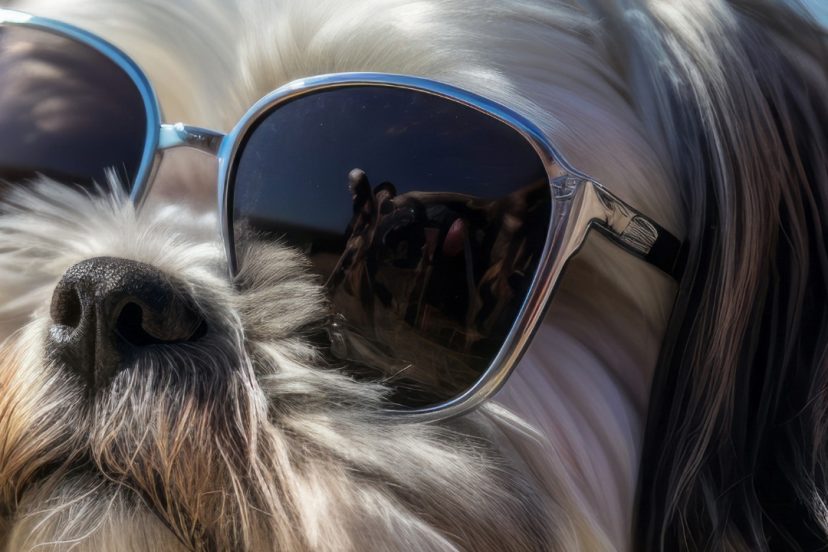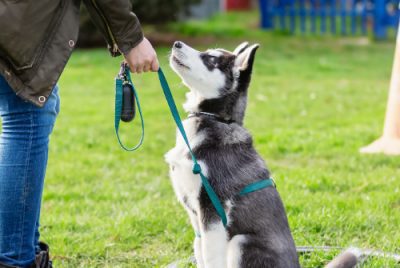Longest Living Dog Breeds: Top 15 List
Post Disclaimer
We may earn a commission for purchases made using our links. Please see our Disclaimer to learn more.
Explore the Top 15 Dog Breeds with the Longest Lifespan Now
Key Highlights
- Discover the dog breeds known for their remarkable longevity, from the tiny Chihuahua to the energetic Jack Russell Terrier.
- Learn about factors influencing a dog’s lifespan, including genetics, nutrition, and exercise.
- How to care for a senior dog by adapting your home and providing proper health screenings.
- Explore the importance of regular veterinary care, a balanced diet, and mental and physical stimulation for a longer, healthier life for your canine companion.
Introduction
Choosing a dog breed is not just about looks. It’s also essential to think about how long they live and how they behave. While each dog is unique, some breeds tend to live longer. This is usually due to their genes, fewer health problems, and sometimes being smaller in size. Knowing about breed traits and providing good care can help you enjoy many happy years with your dog.
Discover the 15 Dog Breeds Known for Their Remarkable Longevity
For many future pet parents, how long a dog might live is essential when choosing a breed. Diet, exercise, and care are important too. Some breeds, however, are genetically more likely to live longer. These breeds often have traits like being smaller and having strong genetics, but remember, each dog can be different.
Let’s examine 15 amazing breeds. We will highlight what makes them unique and what helps them live longer.
1. Chihuahua – Tiny but Mighty Lifespan Champions
These little dogs are known for living a long time. Don’t be fooled by their small size; Chihuahuas have lively and fun personalities. They often live into their late teens, and some even reach 20 years old!
Several things help them live longer. Their small size means they age more slowly than bigger dogs. Chihuahuas also tend to have fewer genetic health problems than larger breeds.
It’s important to remember that good breeding practices are key to their health. Choosing a trusted breeder who cares about genetic testing can help ensure your Chihuahua lives a long and happy life.

2. Yorkshire Terrier – Small in Size, Big on Years
Yorkshire Terriers, or “Yorkies,” are a small dog breed known for living long lives. They often live 14 to 16 years and can even live longer.
Their small size helps them live longer, and they usually have fewer health issues than bigger dogs. Good care, like a healthy diet and regular exercise, is significant in helping them have long and happy lives.
Like many dogs, Yorkies can have health problems. Pet parents should look for low blood sugar, knee problems, and eye troubles. If they notice anything, getting veterinary care is important so their Yorkie can enjoy a long and joyful life.

3. Dachshund – The Long-Lived Sausage Dogs
Dachshunds have short legs and long bodies, which makes them quite charming. They are known for living a long time, typically between 12 to 16 years. Their small size helps them have a longer lifespan.
However, because of their special shape, Dachshunds can face back problems, especially Intervertebral Disc Disease (IVDD). Responsible breeding is very important to lower this risk. People looking to adopt should ask about IVDD tests and ways to prevent this issue.
Even with this challenge, Dachshunds can enjoy long and happy lives. With good care, a healthy diet, and exercise that protects their backs, they can bring love and laughter to their families for many years.

4. Toy Poodle – The Intelligent Longevity Stars
Toy Poodles are intelligent, elegant, and live long lives. They usually live for 15 to 18 years. These dogs can show that not all smaller dogs are just lapdogs. They need a lot of mental stimulation. They enjoy playing interactive games, joining training sessions, and solving puzzle toys that keep their minds active.
Due to their solid genes and small size, toy poodles live long lives. Still, like all dog breeds, toy poodles can have health problems. They might face issues like patellar luxation and eye problems, meaning their owners must care for them closely.
You can help your Toy Poodle live a long and happy life by giving them a good diet, fun activities, and regular visits to the vet. This way, you can enjoy their playful nature for many years.

5. Maltese – Ancient Breed with a Lengthy Lifespan
The Maltese is a dog breed with old roots and a long, beautiful coat. They usually live for 12 to 15 years, which is a long time for a pet. Their small size and careful breeding help them stay healthy.
It’s essential to keep your Maltese at a healthy weight. If you overfeed them, they can become overweight. This extra weight can harm their tiny bodies and lead to joint problems and other health issues. Regular exercise and a good diet are critical.
While Maltese dogs are generally healthy, they can face issues like glaucoma, White Shaker Syndrome, and dental problems. Regular visits to the vet for check-ups, vaccinations, and care will help your little friend have a long and happy life filled with love.

6. Shih Tzu – The Lion Dogs with Long Lives
Shih Tzus are known for their unique “lion dog” look and loving nature. They usually live an average lifespan of 10-16 years and often reach the longer end of this range. Their small size and muscular build help them live longer, making them an excellent choice for people who want a small breed that can be a long-term companion.
However, Shih Tzus can have some eye issues since they have prominent eyes. They may get problems like dry eye or proptosis. Taking care of their eyes and getting veterinary help quickly if you notice any irritation or discomfort is important.
Shih Tzus can have long, happy lives even with these potential eye issues. With the proper care, a balanced diet, regular exercise, and attention to their health, these dogs can bring their owners years of love and joy.

7. Jack Russell Terrier – Small, Energetic, and Long-Living
Jack Russell Terriers are known for their endless energy and fun behavior. They also live surprisingly long for such a small and lively breed. These determined dogs can be good companions for 13 to 16 years, showing active dogs can live long.
Their long lives are often due to their good health and lower risk of severe genetic issues seen in larger breeds. Still, Jack Russells can develop certain issues, such as lens luxation, patellar luxation, and Legg-Calve-Perthes disease.
Regular vet visits are essential to help them stay healthy and live longer. A balanced diet that fits their energetic lifestyle is also important. Plus, giving them plenty of time to run and play helps keep them happy and healthy.

8. Pomeranian – Fluffy Companions with Long Lives
Pomeranians are small dogs, but they are surprisingly strong. They often live from 12 to 16 years of age. This long lifespan makes them an excellent choice for people who want a small breed companion for many years. These tiny pups have big personalities. They are known for being intelligent, lively, and loyal to their families.
Though they are usually healthy, Pomeranians can have some health problems. These can include knee issues, breathing problems, and dental care needs. This shows how important it is to breed them responsibly and regularly take them to the vet. This helps keep them healthy and ensures they have a long life.
With the proper care, a good diet, enough exercise, and lots of love, Pomeranians can do well and bring happiness and companionship to their families for many years.
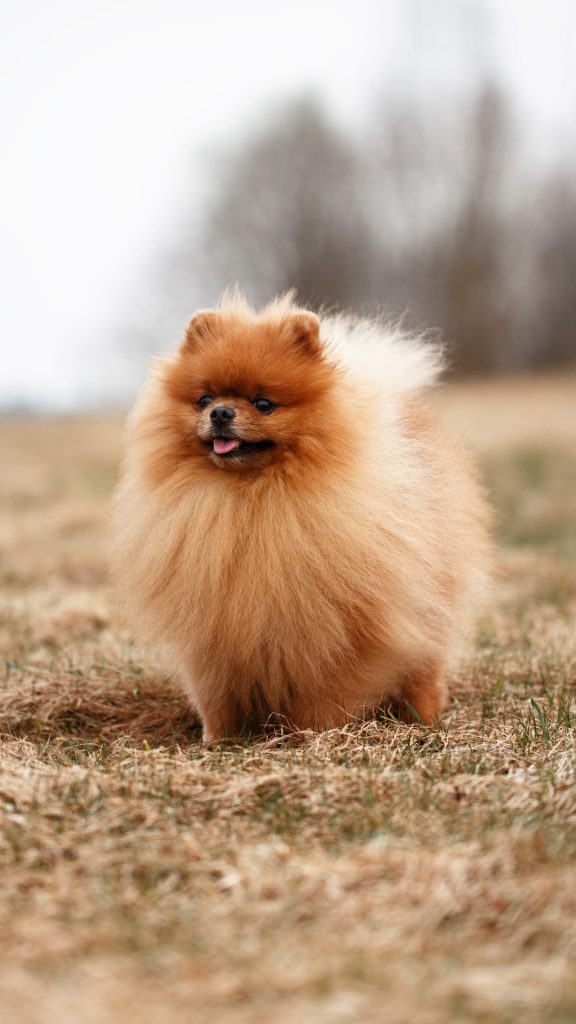
9. Miniature Schnauzer – The Bearded Lifespan Warriors
Miniature Schnauzers are known for their unique beards and lively personalities. They usually live between 12 and 14 years; some may live longer. These intelligent and loving dogs can enjoy a long life despite facing a few health problems.
While they are not free from health issues, Miniature Schnauzers are often healthier than many other dog breeds. However, they can be prone to problems like pancreatitis, bladder stones, and eye issues such as cataracts and progressive retinal atrophy.
Regular vet visits, a good diet, and plenty of exercise are important. They help detect health problems early and ensure that your Miniature Schnauzer has a long lifespan and a happy life. You can take great care of these lively companions by being careful and attentive to their needs.
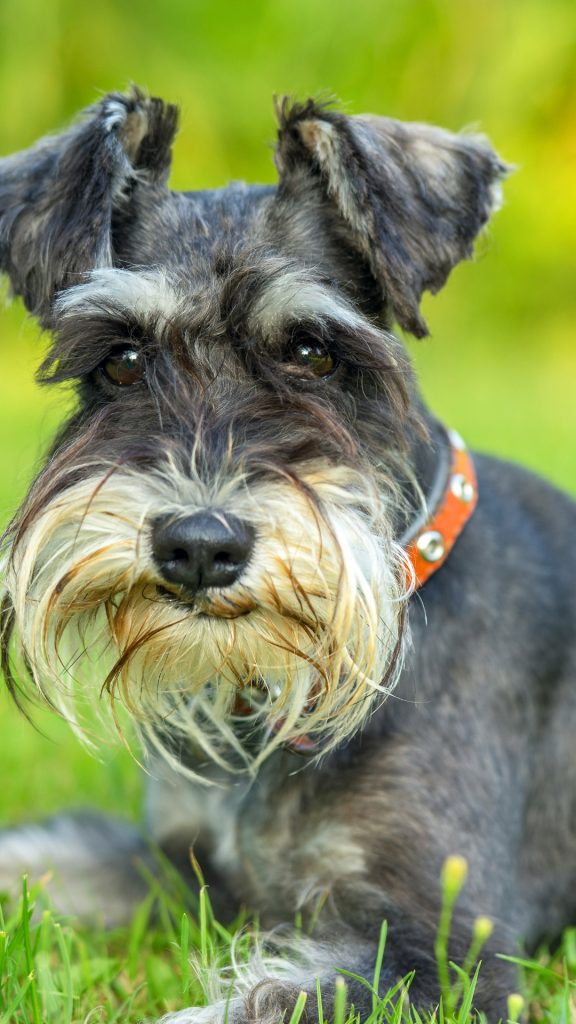
10. Australian Cattle Dog – Hardy and Healthy Lifespans
Australian Cattle Dogs are known for being intelligent and hard-working. They are also known for living longer than many medium-sized breeds. You can expect these dogs to live between 12 to 16 years. With good care and an active lifestyle, many can live longer.
Australian cattle dogs have long lifespans due to several factors. They have strong genes and were bred to be healthy and good workers. They usually stay active in their daily lives. Keeping a healthy weight is very important for Australian Cattle Dogs. Being overweight can stress their joints and result in health issues.
To keep these smart dogs happy and healthy, they need regular exercise, a good diet, and mental stimulation. Routine veterinary care, like vaccinations and parasite prevention, is also essential. This care helps them enjoy long, healthy lives.

11. Beagle – The Merry Little Hounds with Long Lives
Beagles are known for being friendly and playful. They have soulful eyes and charming howls. Beagles are one of the medium-sized breeds that live the longest. They usually live between 10 and 15 years, bringing joy to families worldwide. Their fun nature and loving personalities make them great family pets, especially for homes with kids.
Beagles tend to be reasonably healthy, which helps them live long lives. However, they can still have some health issues. Common problems include obesity, hypothyroidism, and epilepsy. It’s important to take them to the vet regularly.
Give your Beagle a balanced diet and exercise to help them live a long and happy life. They love to play, so interactive games and training can keep them mentally stimulated. Their loving nature and enthusiasm for life make them a wonderful part of any family for many years.

12. Papillon – The Butterfly-Eared Long Livers
Papillons have ears that look like butterflies and are known for being playful. They can live long, usually around 14 to 16 years, and sometimes even longer. They make great family pets because they are gentle, can adapt to different homes, and are easy to train.
Several reasons explain their long life. Their small size helps them live longer, like many other small breeds. Plus, Papillons have fewer health issues that often affect larger dogs.
Still, like all dog breeds, Papillons can have some health concerns. Pet parents should watch out for problems like slipping kneecaps, collapsing trachea, and eye issues. Proper veterinary care is vital to help your Papillon have a long and happy life.

13. Lhasa Apso – The Tibetan Longevity Secrets
Lhasa Apsos are stylish dogs that come from Tibet. They have long coats and an upright attitude. In Tibet, they were good companions and watched over monasteries. This old dog breed usually lives for 12 to 15 years. Their muscular bodies and careful breeding for a harsh environment help them sometimes live even longer.
These dogs are intelligent and like to be independent. They show love to their families but can be cautious around new people. While they are primarily healthy, Lhasa Apsos can face some health issues. These include progressive retinal atrophy (PRA), dry eye, and skin allergies.
To help your Lhasa live a good life, make sure they have regular vet visits. Please provide them with a balanced diet and groom them often to avoid knots in their fur. Lastly, give them lots of love and attention to keep them happy and healthy.

14. Miniature Pinscher – The King of Toys with a Royal Lifespan
Miniature Pinschers, often called “the King of Toys,” are known for their proud walks and fun personalities. They live a long time, usually around 14 to 16 years, and this long lifespan brings joy and love to their families.
Their small size and robust build help them live longer. While Miniature Pinschers are primarily healthy, they can still face some health issues. Pet parents should watch for problems like Legg-Calve-Perthes disease, patellar luxation, and eye conditions like cataracts.
It is important to give Miniature Pinschers a healthy diet to help them live long and happy lives. They also need exercise, mental stimulation, regular veterinary care, and lots of love.
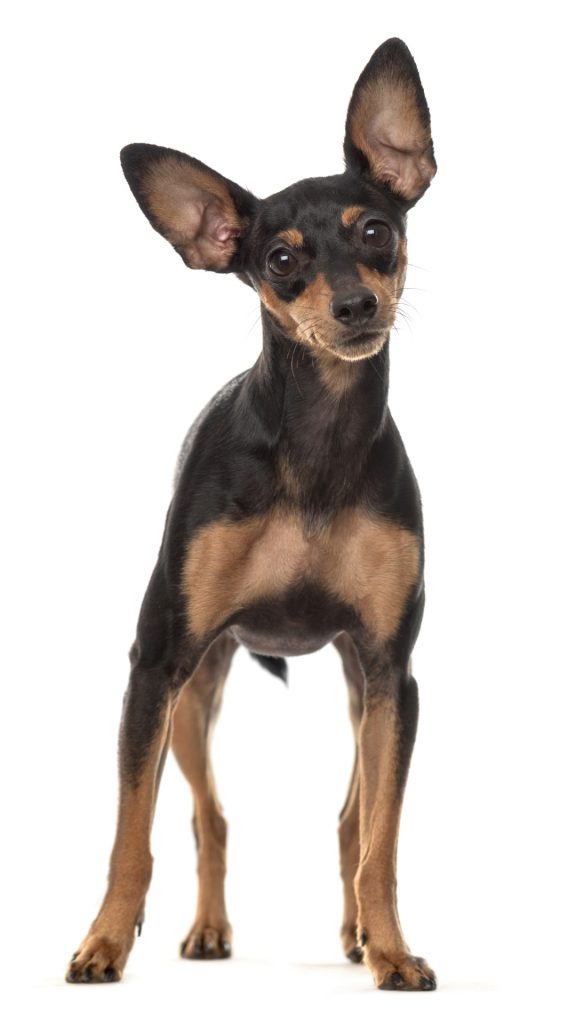
15. Italian Greyhounds – Sleek, Fast, and Long-Living
Italian Greyhounds are slim and elegant dogs. They often surprise people with their long lifespans. On average, they live between 14 to 18 years. Many of them even make it to the older end of this range. They provide families with years of love and cuddles.
Their long lives are often due to good health and lower chances of major genetic health problems that affect larger dogs. Their slim bodies and light bones help them stay active and graceful as they age.
But like other dog breeds, Italian Greyhounds have some health issues to watch for. Because of their fragile bones, they may face dental problems, patellar luxation, and leg fractures. Regular vet visits, a balanced diet, and a safe home are very important to help these lovely dogs live long and healthy lives.

Understanding What Influences a Dog’s Lifespan
A dog’s lifespan depends on its breed, but many factors are up to the owner. Like people, a healthy life can help dogs live longer.
Food, exercise, and veterinary care are key to a happy, long dog life. Knowing about these things helps owners make better choices so their pets can enjoy a lively life for as long as possible.
The Role of Genetics in Canine Longevity
Genetics plays a big part in how long a dog may live. Each breed has genes that affect its risk for specific health problems and how long it can live. For example, larger breeds usually live shorter lives than smaller breeds, partly because of their genetics.
But genetics is not the only factor. Within the same breed, individual dogs can have different levels of genetic risks. Good breeding practices, like genetic testing and careful choices of parent dogs, are essential. These practices help lower the chances of inherited health issues and can lead to healthier, longer lives for puppies.
So, while a dog’s breed gives a rough idea of its life expectancy, remember that genetics doesn’t control everything. Learning about common health issues in a breed and working with trustworthy breeders who focus on genetic health can help your dog live a long and happy life.
The Importance of Proper Nutrition for Extending Your Dog’s Life
Proper nutrition is vital for a long and healthy life for all dogs, regardless of breed or size. Feeding your dog a balanced diet that fits its age, breed, and activity can significantly affect its health and may help it live longer.
A good diet with essential nutrients gives your dog the support they need for a robust immune system, healthy bones and muscles, and a healthy weight. It also helps prevent health problems. Obesity, which often comes from poor nutrition and overeating, can lead to various health issues in dogs. These include diabetes, heart disease, and joint problems. All of these can make their life shorter.
Talking to your vet for personalized diet advice and carefully checking food labels for quality ingredients can help. Good nutrition is an investment in your dog’s future health and happiness.
Exercise and Its Impact on a Dog’s Lifespan
Regular exercise is good for keeping your dog fit, aiding its mental health, and may help it live longer. Daily activity helps maintain a healthy weight, builds strong muscles and bones, and lowers the chances of health issues like heart disease and diabetes. It also keeps your dog’s mind active and sharp.
The kind and amount of exercise your dog needs depends on their breed, age, and health. High-energy dogs enjoy long walks, runs, or fun games of fetch. Older dogs or those with health problems might do better with shorter walks, gentle play, or swimming.
Establishing a regular exercise routine that fits your dog’s needs is important. Gradually increase the intensity and ensure it is enjoyable for you and your dog. This way, you help them stay healthy and happy and support a longer life.
Caring for a Senior Dog
It is important to notice when your dog becomes senior. This helps you adjust its care to fit its new needs. Senior dogs may move around less, have changes in their senses, and be more likely to have age-related health issues.
To help your senior dog live well, give them extra care. Change their surroundings to make them safer and more comfortable. Also, remember to take them to the vet regularly. This can help your senior dog lead a comfortable, happy, and respectful life, even with the challenges of aging.
Adapting Your Home for an Aging Dog
As dogs get older, their needs change. Simple changes at home can help them feel better and live well. Things like going up and down stairs or jumping on furniture may become hard or hurtful for them.
Think about getting ramps or steps to help your senior dog with stairs. You can also get soft pet beds in different places to support their stiff joints and stop sores. Non-slip mats on smooth floors can protect them from slipping and getting hurt. Putting nightlights in some spots can help senior dogs who may have trouble seeing.
Remember, aging is normal. Making these changes shows that you love and care for your dog. Giving your senior dog a safe and comfy home, you help them enjoy their golden years with love and comfort.
Health Screenings and Preventative Care for Older Dogs
Just like people, dogs need more care as they get older. Regular check-ups and prevention can help keep them healthy in their senior years.
It would be best to take your dog to the vet more often, at least every six months. This helps find any health issues early. Tests like bloodwork, urinalysis, and dental exams are important. They check your dog’s organ health, spot infections, and deal with dental problems, which many older dogs have.
Keeping a healthy weight, eating a balanced diet, and drinking enough water are key for senior dogs. Talk to your vet about any concerns. Quick action for age-related health issues is important to help your dog enjoy a good quality of life in its golden years.
Conclusion
In conclusion, knowing what helps your dog live longer is important. Genetics, nutrition, exercise, and good care for older dogs all matter. Each part plays a big role in keeping your furry friend healthy for many years. When you pick one of the amazing long-living breeds and give them a loving home, you are helping them lead a happy life with you. Enjoy every moment with your loyal pet and focus on their well-being to make great memories together. Your four-legged friend deserves the best care to live a long life and be happy with you.
Frequently Asked Questions
What can I do to help my dog live longer?
Regular exercise, good nutrition, regular health check-ups, and preventive care are very important. It’s also crucial to shower them with love and attention. This helps to create a caring environment that supports their physical and emotional health.
Are smaller dog breeds more likely to live longer?
Smaller dogs usually live longer than larger dogs. Genetics is essential, but other things matter, too. For example, smaller dogs often have fewer health issues. This helps them have a longer life expectancy.
How often should I take my senior dog to the vet?
Senior dogs should see a vet twice a year. These visits are important. They help check your dog’s health, find problems early, and implement ways to prevent them. All of


